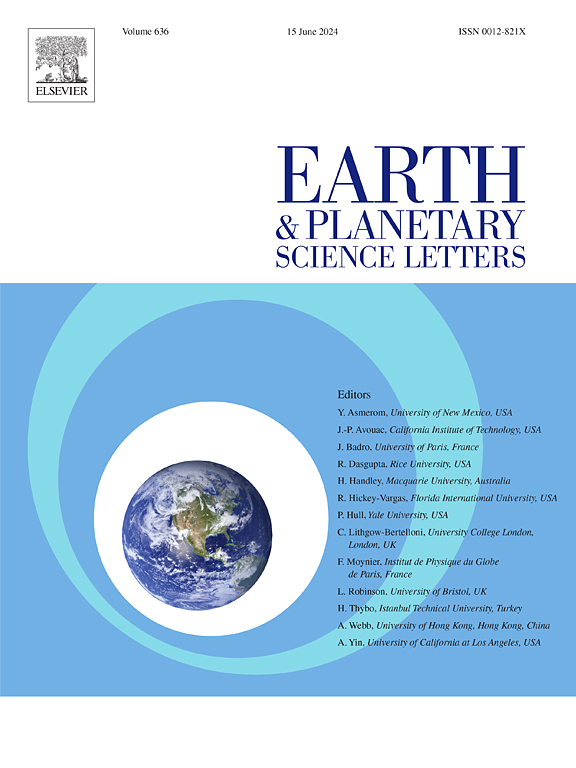Are long-lasting isotope trends independent from slab dynamics, upper-plate stress regime and crustal thickness? Insights from central Patagonia
IF 4.8
1区 地球科学
Q1 GEOCHEMISTRY & GEOPHYSICS
引用次数: 0
Abstract
Understanding the interplay and impact of internal and external factors on magma composition is crucial for constraining crustal evolution, tectonic processes and global geochemical cycles in convergent continental margins. The integration of zircon isotope (Hf-O) and trace element analyses with U-Pb geochronology provides insights into temporal shifts in magma composition and reservoir evolution. However, debates persist regarding the role of external and internal factors in magma evolution, particularly in complex subduction zones. To address this issue, we examined detrital zircon samples from central Patagonia (45°S–48°S), which is renowned for extensive continental arc magmatism since the Late Triassic. With alternating phases of shallow- and steeply-dipping slab lasting < 50 million years, and apparent minimal changes in crustal thickness until the Miocene, this region offers a valuable opportunity to study the influence of internal and external factors on magma composition changes through time. Our study unraveled long-term trends for Hf-O and some trace elements ratios spanning at least 70 Myr. Such trends appear to be primarily related with crustal thickness of the overriding plate, and only secondarily with slab dynamics or upper-crustal stress regime. During time spans characterized by a thin crust (Jurassic to late Paleogene), external forcing controlled magma depletion and enrichment trends. Depletion resulted from the solely or concurrent effects of depleted components addition from: (i) the upwelling of a moderately depleted mantle triggered by slab rollback (Jurassic – Early Cretaceous and late Paleogene), or (ii) opening of slab tear/window in adjacent regions (Late Cretaceous – early Paleogene), as well as (iii) melting of the altered oceanic crust (Early – Late Cretaceous) or (iv) subduction of sediments derived from the erosion of juvenile forearc units (Paleogene). Conversely, contribution of enriched units of the forearc may have triggered the gradual enrichment observed during the Paleogene. However, the sudden enrichment during the Neogene has been related to a more effective crustal assimilation process during the Miocene Andean orogeny, characterized by amphibole fractionation and thus moderate crustal thickening. Our findings revealed that, depending on crustal thickness, either internal or external factors control long-term arc magma evolution. Internal factors are dominant in thicker-crust settings, while external factors – enabling mantle upwelling, slab melt or sediment subduction, which in turn affect mantle wedge composition – govern thin-crust settings.
求助全文
约1分钟内获得全文
求助全文
来源期刊

Earth and Planetary Science Letters
地学-地球化学与地球物理
CiteScore
10.30
自引率
5.70%
发文量
475
审稿时长
2.8 months
期刊介绍:
Earth and Planetary Science Letters (EPSL) is a leading journal for researchers across the entire Earth and planetary sciences community. It publishes concise, exciting, high-impact articles ("Letters") of broad interest. Its focus is on physical and chemical processes, the evolution and general properties of the Earth and planets - from their deep interiors to their atmospheres. EPSL also includes a Frontiers section, featuring invited high-profile synthesis articles by leading experts on timely topics to bring cutting-edge research to the wider community.
 求助内容:
求助内容: 应助结果提醒方式:
应助结果提醒方式:


